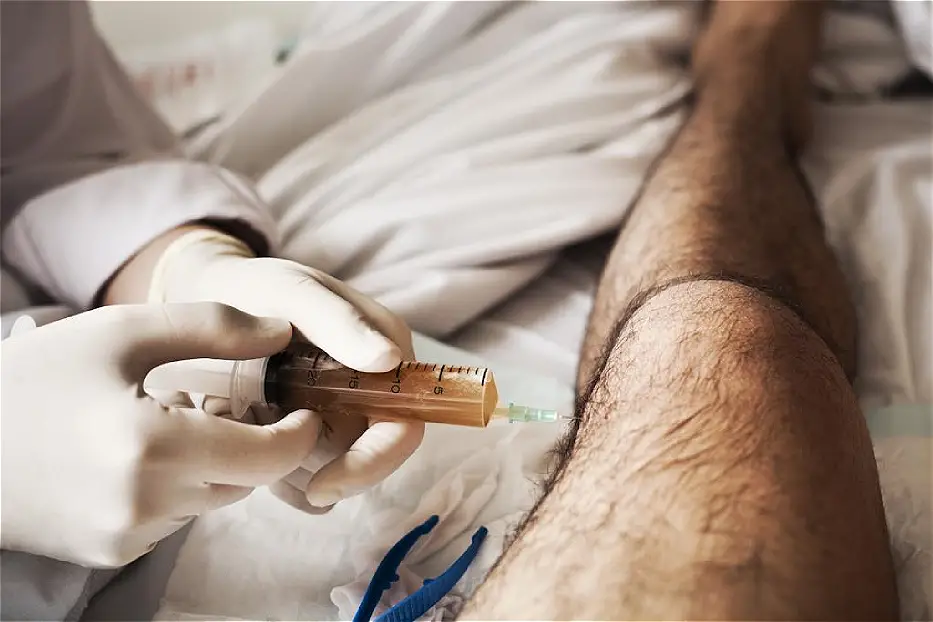The reactive arthritis, formerly known as the síReiter's syndrome, is a form of arthritis that affects the joints, the eyes, the urethra (the tube that carries urine from the bladder to the outside of the body), and skin.
The disease is recognized by various sísymptoms in different óorgans of the body that may or may not appear at the same time. It can manifest as rábegs and severely or más slowly, with sudden remissions or recurrences.
Reactive arthritis primarily affects sexually active males between the ages of 20 a 40 años. People with HIV (human immunodeficiency virus) Eastán at particularly high risk.

Index
¿Whaté causes reactive arthritis?
The cause of reactive arthritis is aún unknown, but research suggests that the disease isá caused, partly, by a predispositionón genética: About the 75% of those who have the conditionón have a positive blood test for the gene markerético HLA-B27.
In sexually active men, the biggestíof cases of reactive arthritis follow from an infectionón for Chlamydia trachomatis O Ureaplasma urealyticum, transmitted diseasesón sexually transmitted by both sexes.
In other cases, people develop theísymptoms afteréI know of an infectionón intestinal with bacteria like Shigella, Salmonella, Yersinia O Campylobacter.
Además to use condoms during sexual activity, there is no known preventive measure for reactive arthritis.
Síntomas
The first sísymptoms of reactive arthritis are painful urination and a dischargeón penis if there is inflammationóno of the urethra. Diarrhea can occur if the intestines areáno affected.
This is followed by arthritis of 4 a 28 díundress themés that usually affects the fingers and toes, ankles, hips and knee joints. In general, sóone or some of these joints can be affected at the same time. Othersísymptoms include:
- Úmouth ulcers
- Inflammationóno of the eyes
- Keratoderma blenorrágica (scaly patches of skin on the palms, plants, the trunk or scalp)
- Back pain from the jointón sacroilíaca (AND).
- pain from inflammationón of ligaments and tendons at the sites of their insertionónot on the bone (esitis)
Diagnostico
The diagnosisóThe diagnosis of reactive arthritis can be complicated by the fact that the sísymptoms often occur several weeks apart. a méDoctor can diagnose reactive arthritis when the patient's arthritis occurs along with or shortly afterés of inflammationón the eyes and urinary tract and lasts a month or moreás.
There is no specific testístay for the diagnosisóreactive arthritis stico, but the médoctor can check urethral discharge for transmissible diseasesón sexual. The stool samples alsoéThey can be examined for signs of infection.ón.
Los anáBlood lysis of patients with reactive arthritis are usually positive for the gene markerético HLA-B27, with a gl countóelevated white bulules and an increased sedimentation rateón globular (VSG) – both signs of inflammationón. The patient tooén can be slightly evenémonkey (with very few glóred bumps in the blood).
The radiographsíJoint examinations do not usually reveal any abnormalities unless the patient has had recurrent episodes of the disease.. In an X-ray exam, joints that have been repeatedly inflamed may show áp areasémealtime ósea, signs of osteoporosis, or spurs óseos.
The joints in the back and pelvis (sacroil jointsíacas) may show abnormalías y dañof reactive arthritis.
¿CóHow is reactive arthritis treated??
bacterial infections, like chlamydia, tenderán have to be treated with antibióticos. The inflammationón joint reactive arthritis is usually treated with nonsteroidal anti-inflammatory drugs (SUBSTANCE), like naproxen, aspirin or ibuprofen. Skin rashes and inflammationón the eye can be treated with steroids.
People with critical diseasesónicas can opt for other medicines, including methotrexate. Patients with arthritis cróunique tooén can be referred to a therapist fíphysical and are encouraged to exercise regularly.
¿CuáHe is the outlook for people with reactive arthritis?
the proneóreactive arthritis varía. The biggestía of people recover in three to four months, but about half have recífor several toños.
Some people develop complications that may include inflammationón of múheart sacón, inflammationón with stiffness of the spine, glaucoma, progressive blindness, anomalousíace in the feet, you accumulate itóend of theífluid in the lungs.

1 thought on “Reactive arthritis or Reiter's syndrome”
Comments are closed.